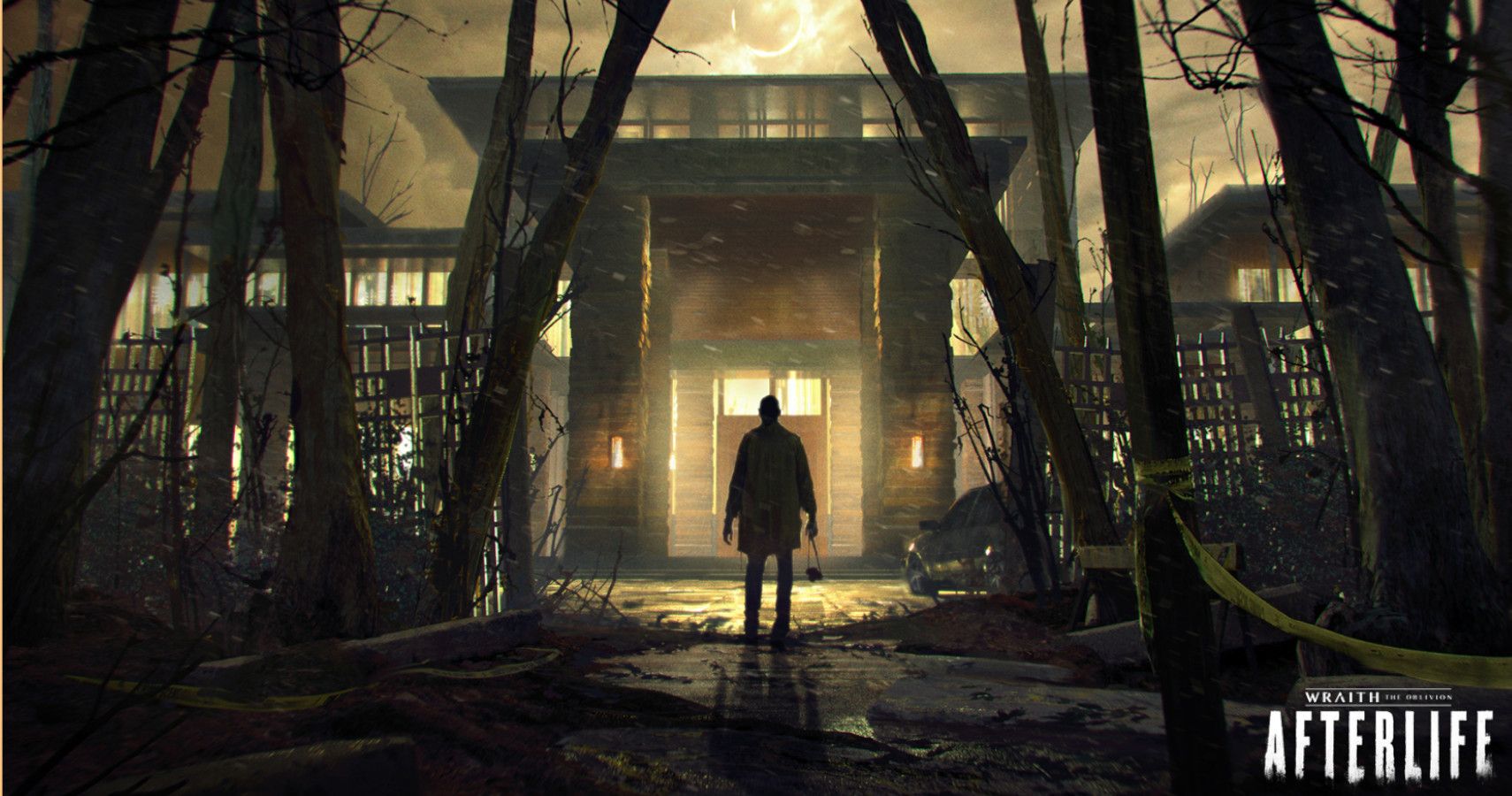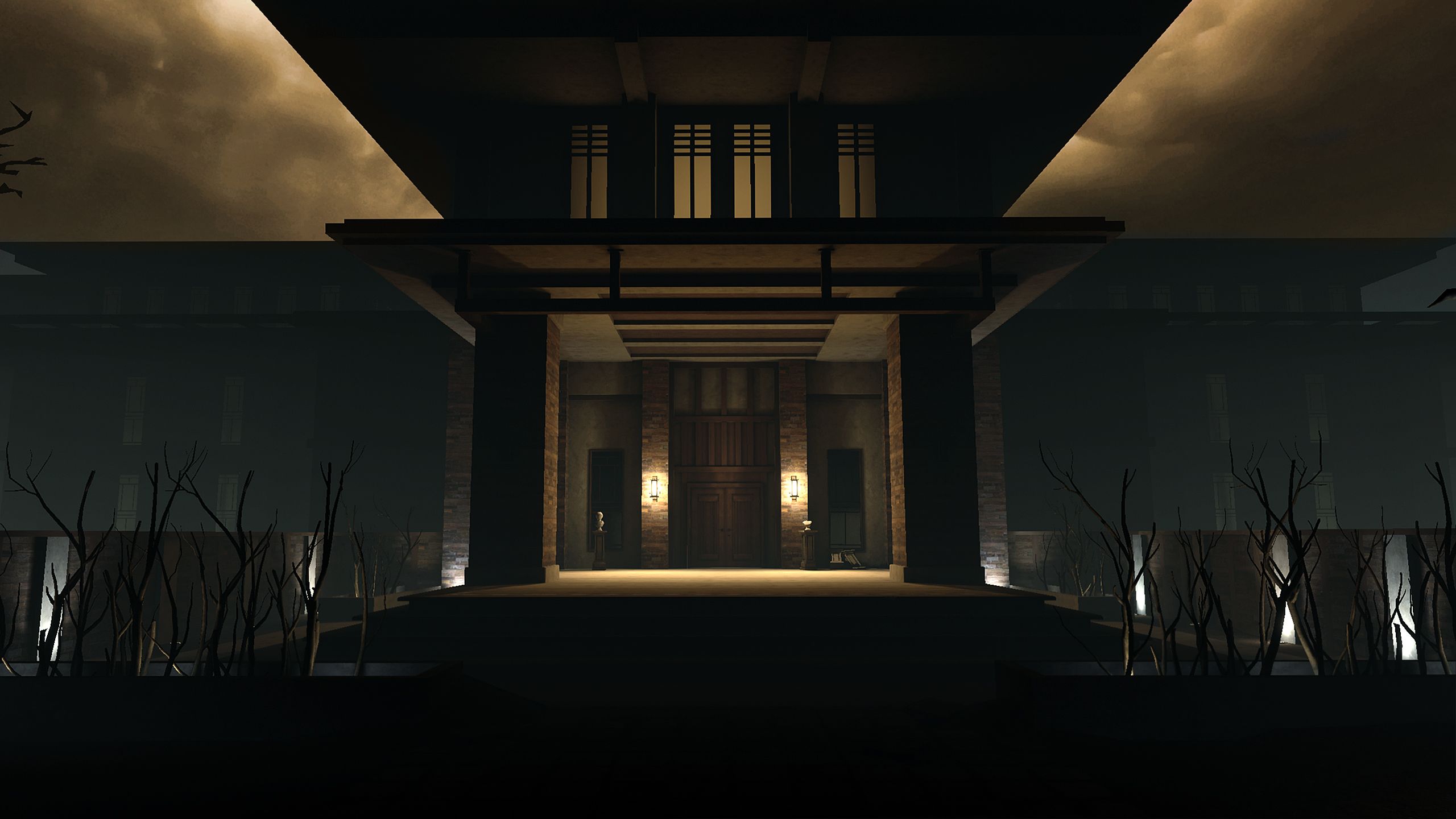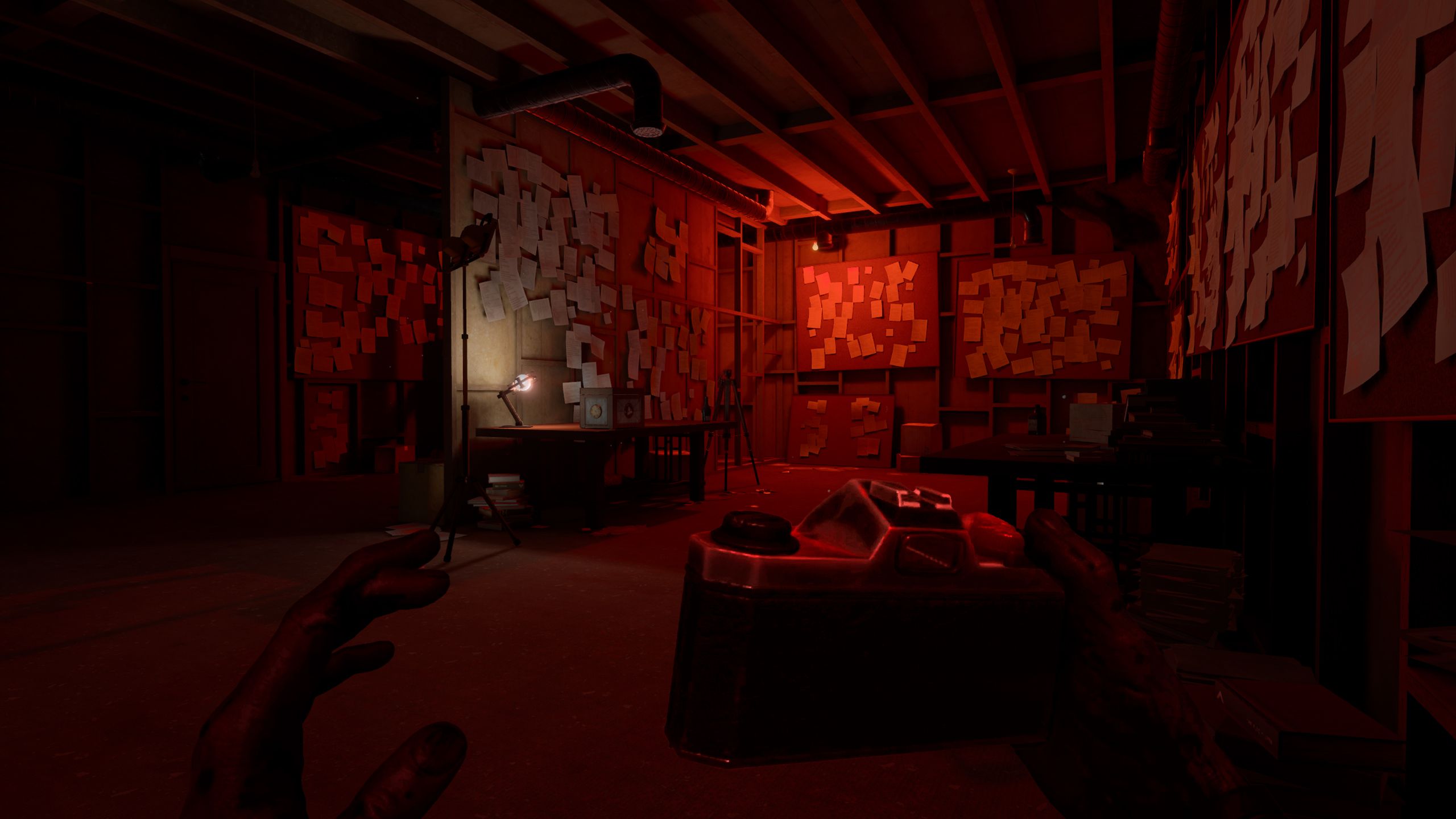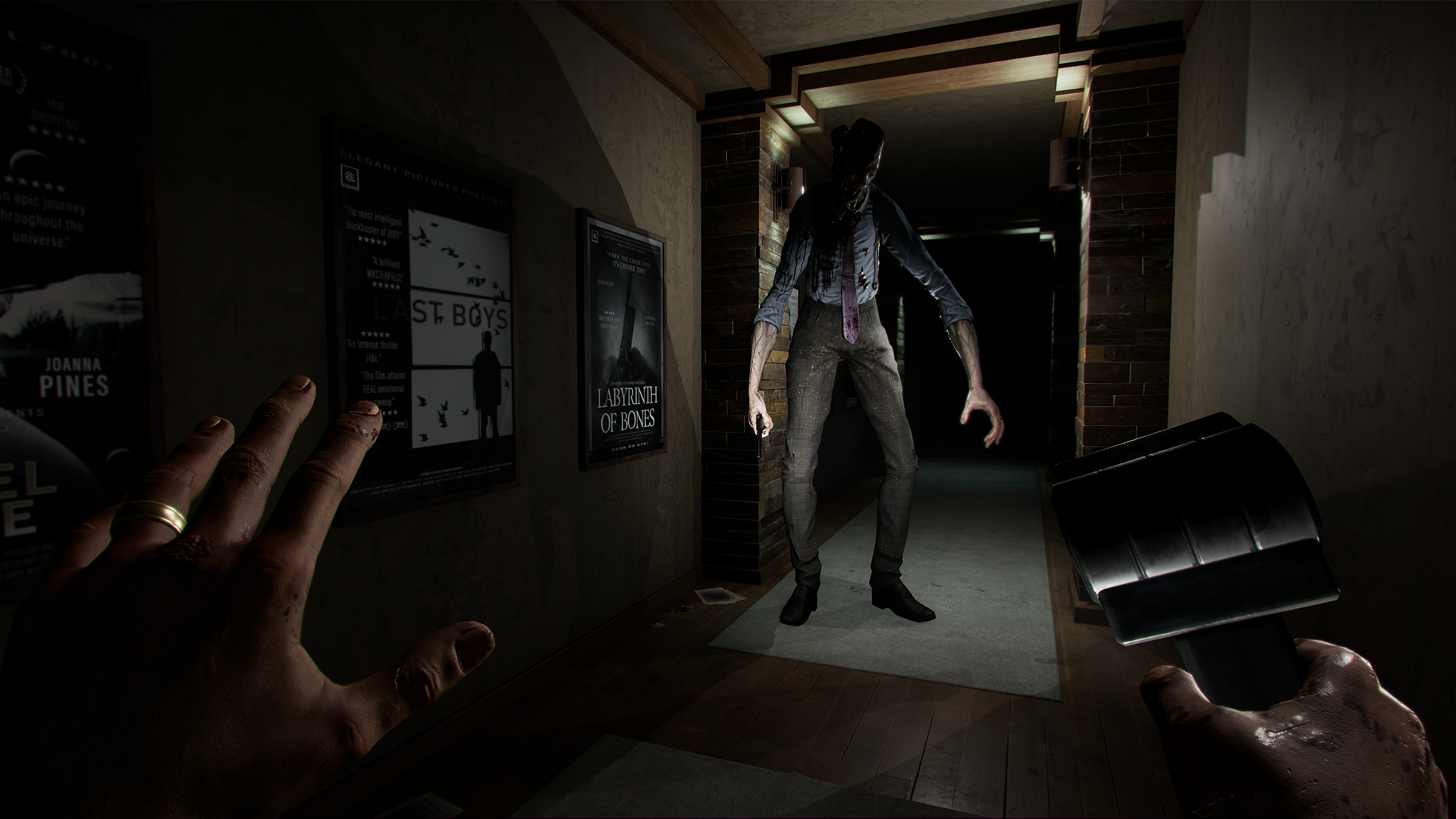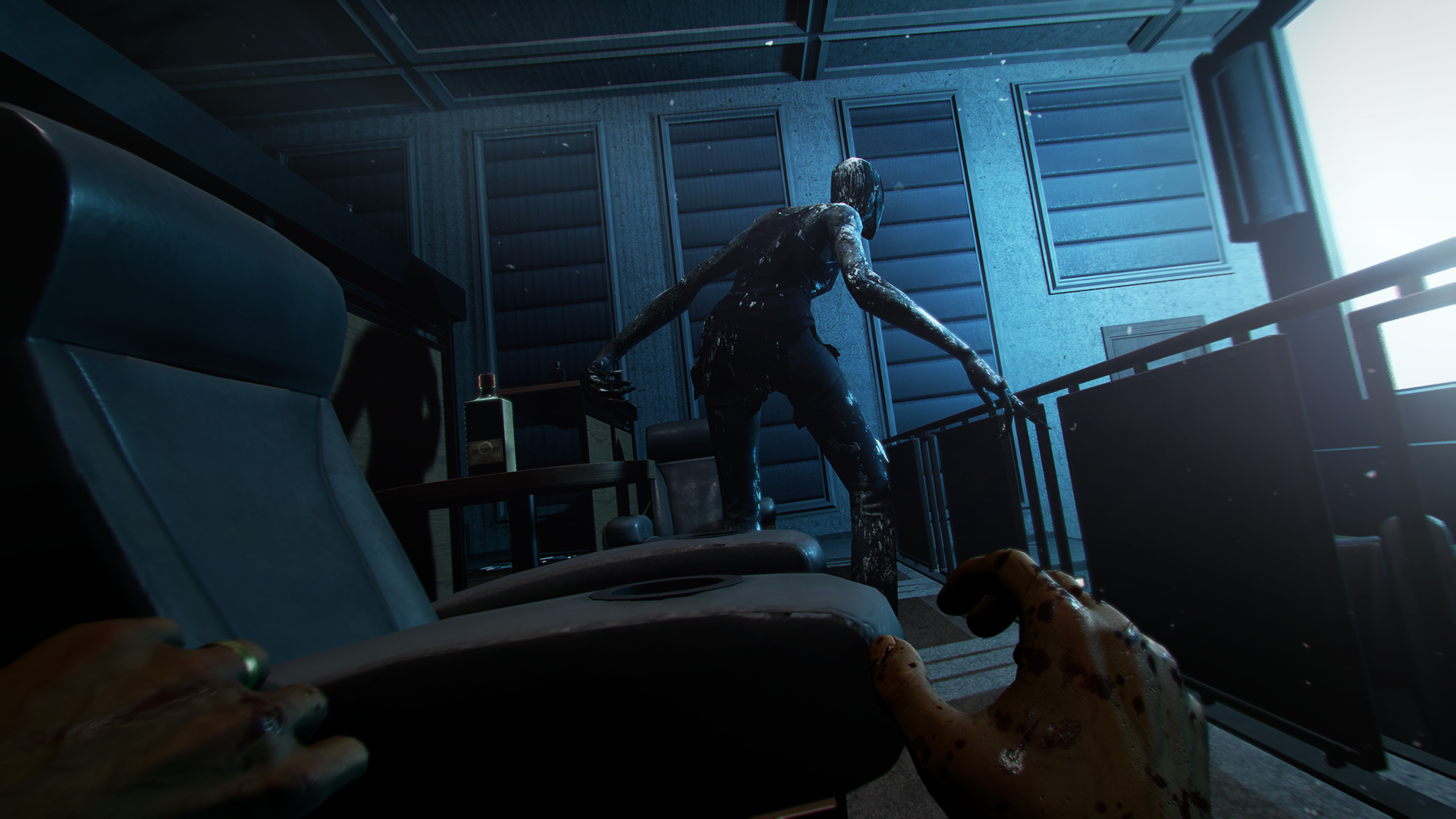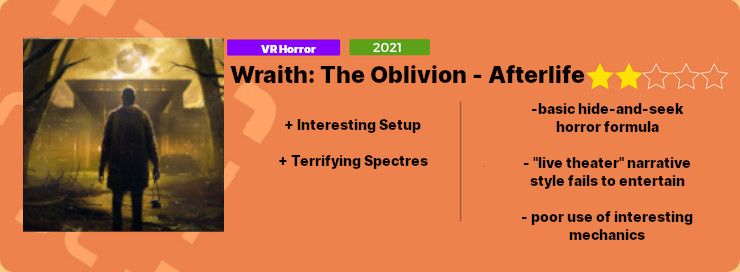It doesn’t take much to make a VR game scary. When you look at a screen, it’s a lot easier to separate fantasy and reality. In VR, there is nothing to separate your visual field from the world of the game. You can look away from something scary, but you can never look away from the game itself. The most cliche monster or overplayed horror scene can still have a big impact on a player in VR because the experience is just so visceral and in (or on) your face. I don’t think Wraith: The Oblivion - Afterlife is the most generic horror game, but the medium is definitely doing a lot of the heavy lifting in delivering scares. Wraith is a terrifying game, so much so that I wasn’t able to play it for more than an hour at a time without needing to take breaks to calm my nerves...at least for the first half of the game. This narrative-driven, exploration-focused VR horror game has a ton of potential and fresh ideas, but it never actually does much with the tools it has to create interesting gameplay, nor does it ever make much use of what VR has to offer. Wraith: The Oblivion - Afterlife is an old-fashioned hide-and-seek horror game elevated by the intimacy of VR, but among its VR peers, there’s hardly anything exceptional about it.
Wraith: The Oblivion - Afterlife is a World of Darkness game. Set in the same universe as Vampire: The Masquerade and Werewolf: The Apocalypse, Wraith: The Oblivion is about a photographer named Ed Miller that died under supernatural circumstance during a seance at the Barclay Mansion. As Ed’s ghost, you’ll explore the mansion, using his camera to discover memories of that fateful night in order to uncover the circumstances of your death while avoiding four evil specters that haunt the halls of the mansion.
I was immediately hooked by Wraith’s narrative setup. Embodying another character can be a tricky thing to pull off, but Wraith puts you in the driver’s seat of a blank slate character with no memories. Like Prey, Wraith puts you on equal footing with the character you play such that both you and Ed are discovering who he is and what happened to him simultaneously. It’s a great starting point, but the delivery leaves a lot to be desired.
The story is told entirely through lore notes and short scenes that spontaneously play out in front of you as you explore the mansion. Without warning, gray, featureless characters will occasionally appear in front of you and re-enact scenes from the night of the seance. These brief moments of exposition occur 20 times or so throughout the game and they never stop feeling like low-budget solutions for plot development. It would be one thing if you were transported to a “living” version of the mansion for these scenes like the “Crack in the Slab” level from Dishonored 2 (ironically, another story about a seance in a mansion) but these scenes are particularly enjoyable or engaging. This will only help you understand the main storyline, and if you want to dig into the characters and specters more to really understand what’s going on in Wraith, you’ll need to scour the mansion for notebooks and newspapers to read. It’s a short (around five hours) narrative-driven game, yet the narrative elements feel like an afterthought.
The bulk of the gameplay consists of running fetch quests around the mansion while avoiding the specters that haunt it. The earliest encounters had a lot of promise. In the first hour, you’ll encounter a hanged man that cries out for his father and a woman that looks like she’s made of shattered glass who cries and stumbles around like the girl from the ring. There is no combat in Wraith, so your only option is to avoid these monsters while you search for objects and move from point A to point B. What I really enjoyed about these encounters was the way you have to always keep the danger in sight to avoid drawing their attention. When you first meet the hanged man, for example, you have to draw his attention in one direction and then sneak up right underneath him to grab a quest item. With the glass woman, you always have to keep one eye on her as you move around the pool area to make sure she never turns to look at you. It’s never enough to turn your back on the terrors and run away, — you have to look right at these horrors and deal with them head-on.
Unfortunately, the next specter is a good old-fashioned patrolling monster that chases you down if he detects you and forces you to hide into a closet until he paths away. And by “good” old-fashioned, I mean tired and played out. I can’t overstate the degree to which Wraith loses all of its suspense and scary potential when you have to repeat encounters, and the tall man that you meet in the Mansion’s offices caused me to start the encounter quite a few times. Getting pinned down in a closet just waiting for the monster to path away isn’t particularly scary or suspenseful, but it is often a huge waste of time. The tall man roams around the office area unscripted and often gets stuck in loops walking back and forth between two rooms and leaving you with nowhere to escape. My fear turned into frustration as I tried to sneak around this creature, his arms and, evidently, vision able to clip through walls and quickly track me down. This was the beginning of my experience with fail states in Wraith, and things only got worse from there.
Wraith practically never thinks outside the box with its enemies or gameplay mechanics. After the tall man encounter, the next segment sends you to the pitch black guest house where you’ll bump into walls for 20 minutes as the game’s main antagonist, the Broken Women, slowly follows you around. You have a flashlight, but it doesn’t illuminate the space at all. In fact, none of the tools and powers the game gives you serve most of a purpose whatsoever. You’ve got a camera, flashlight, and a voice recorder, as well as the ability to pass through certain walls, grab objects at a distance, and lift heavy objects. These items are given to you throughout the course of the game like upgrades, but you hardly ever use any of them. When you do, you’re not really solving a puzzle so much as you’re just overcoming the most obvious obstacle stopping your progression. Heavy box in the way? Use your power to move it. Locked door? Walk through the wall next to it. There’s no problem solving and you never get anything you can use to fight back against the specters. All you can ever do is creep around and try to avoid line of sight, which frankly, gets pretty exhausting.
I really like the concept of Wraith, and I enjoyed exploring the Barclay mansion and learning the layout of the house. I think the spectres have interesting designs too, but I just don’t feel like Wraith does anything interesting with its story or its monsters. While the VR medium definitely makes the game scarier, there’s absolutely nothing about Wraith that wouldn’t have worked just the same in a normal game. The hide-in-seek genre of horror games has been done to death, and Wraith would have been much better served by more scripted encounters, on rails scares, and fewer (or no) fail states. Once a monster catches you and sends you back to your last save, it loses almost all of its power to scare you. Wraith stopped being scary when it started being tedious. It’s one of the most disappointing horror games I’ve played because I loved the way it started, but its strong introductions never developed into anything more compelling.
A review code for Wraith: The Oblivion - Afterlife was provided to TheGamer for this review. Wraith is available now on Oculus Quest and Oculus Rift.
Wraith: The Oblivion - Afterlife

